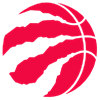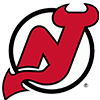There was a time I'd call this buying high, but since a bevy of other writers have adopted the concept, I'll go back to writing about fast starts with reason to believe at least part of it will subsist. That is, the players may slow down, but there is reason to believe some aspect of their skill set is better than anticipated a month ago.
Once again, the subjects are culled from a recent Tout Table. The question posed was:
Whose unexpectedly fast start are you most optimistic will continue?
Over 20 players were discussed; I've chosen five to highlight.
Nico Hoerner
To be fair, Hoerner has already slowed down, but he still has a solid chance to outproduce his ADP of 143 in the NFBC Main Event and 139 in the RotoWire Online Championship. Since April 23, he's slashed just .178/.240/.222, but he's fanned only 16 percent of the time in that span. A .211 BABIP has harpooned his production, though it's not all bad luck as Hoerner's line drive rate is only 16 percent in that stretch, as compared to 21.5 percent for his career.
There are two reasons why Hoerner will likely outproduce his draft spot. The first is volume. Despite his recent woes, he continues to bat leadoff. Last season, he never hit at the top of the order, instead batting fifth or lower for all but 12 of his starts. On average, Hoerner hit sixth last season. Over a full season, the difference between
There was a time I'd call this buying high, but since a bevy of other writers have adopted the concept, I'll go back to writing about fast starts with reason to believe at least part of it will subsist. That is, the players may slow down, but there is reason to believe some aspect of their skill set is better than anticipated a month ago.
Once again, the subjects are culled from a recent Tout Table. The question posed was:
Whose unexpectedly fast start are you most optimistic will continue?
Over 20 players were discussed; I've chosen five to highlight.
Nico Hoerner
To be fair, Hoerner has already slowed down, but he still has a solid chance to outproduce his ADP of 143 in the NFBC Main Event and 139 in the RotoWire Online Championship. Since April 23, he's slashed just .178/.240/.222, but he's fanned only 16 percent of the time in that span. A .211 BABIP has harpooned his production, though it's not all bad luck as Hoerner's line drive rate is only 16 percent in that stretch, as compared to 21.5 percent for his career.
There are two reasons why Hoerner will likely outproduce his draft spot. The first is volume. Despite his recent woes, he continues to bat leadoff. Last season, he never hit at the top of the order, instead batting fifth or lower for all but 12 of his starts. On average, Hoerner hit sixth last season. Over a full season, the difference between first and sixth in the order is around 90 plate appearances. I doubt anyone drafted Hoerner with the expectation he would lead off. This is not to say he can't be dropped in the order if his slide continues, but assuming he can right the ship, he could jump back to the top.
Furthermore, a couple of injuries limited Hoerner to only 135 games last season, albeit with a career-high 517 plate appearances. If he can avoid the IL this season, he'll surpass playing time expectations even without the lineup factor.
Stolen bases are the other reason Hoerner will probably return a profit this season. While it can be argued he fit the profile of someone in a position to benefit from the new rules, the extent was unclear. Just one month into the season, Hoerner's 11 bags are already more than halfway to last season's 20.
Nolan Gorman
Gorman showed enough last season to at least be on the radar in spring drafts. However, a 399 ADP in the Main Event and 381 in the OLC suggests it was more in a reserve capacity. From an offensive perspective, Gorman's power was obvious, but a high strikeout rate capped his output, not to mention harpooned his batting average. From a defense point of view, Gorman can play a few positions, but not nearly as well as the Gold Glovers already there, and on paper, he had designated hitter competition from Juan Yepez while the emergence of Jordan Walker was sure to cost him playing time.
Fast forward a few weeks and Gorman is fanning less while hitting the ball with more authority. As explained last time, stability points are a misnomer, so I can't go down that road to lend a statistical angle to my argument. I just don't think striking out four percent fewer times while walking three percent more is a fluke. Maybe those deltas narrow, but it appears Gorman is making better swing decisions, and as a result he's smoking the ball. His average exit velocity is up three clicks while his hard-hit rate is 11 points higher.
Playing time is also less muddled, especially with Yepez out of the mix and not playing well enough for Triple-A Memphis to force the issue. Walker will return at some point, but the Cardinals appear to want him in the outfield, so Gorman's designated hitter role is safe.
James Outman
There aren't ample Ls in the alphabet to describe how wrong I was about Outman, despite being alerted to his potential by several colleagues I trust. The MLEs (major league equivalencies) weren't special, mostly due to Outman being advanced for his level and playing a lot in high-offense environments. I still trust number scouting, but it has its deficiencies.
Another mistake I made was completely misreading the Dodgers offseason plans. I thought for sure they'd sign a free agent to play the outfield, but they had other ideas. I don't know, maybe they liked Outman? Main Event drafters pegged him as a wait-and see reserve with a 352 ADP. He landed 360th in the OLC.
Outman isn't without faults as he carried a high 33.3 percent strikeout rate. If you have not already done so, check out our note on his player page describing how he made some adjustments after going hitless in 11 at-bats with seven strikeouts. He does have an 11.4 percent walk rate, suggesting Outman knows the strike zone. He just has to swing at pitches he's more likely to contact.
Outman's quality of contact isn't elite, but his combination of skills paints an encouraging picture. His average exit velocity and hard-hit rate are above average, while his sprint speed is 87th percentile. According to Statcast, his 95.2 mph flyball average exit velocity is about nine mph harder than his groundball mark, indicating an uppercut swing. The high exit velocity on flyballs drives plus power, but an uppercut swing means the bat spends less time in the hitting zone, resulting in a lower contact rate. This is where making better swing decisions can help reduce punchouts while further aiding power. To be fair, Outman's chase rate is low, so he just needs to wait for his pitch within the zone.
The Dodgers are mid-pack in steals with 21 through Thursday's action. Outman's four bags tie Freddie Freeman for most on the club. The rookie's 80 percent success rate should mean he'll continue to get the green light, further embellishing his fantasy appeal.
Lastly, while it has yet to manifest in defensive metrics such as defensive runs saved, Outman has the tools to be an above average outfielder. Statcast ranks his arm strength in the 94th percentile, to go along with 62nd percentile outfield jump.
Yandy Diaz
Can you imagine how dangerous Diaz would be if he ever learned how to loft the ball, instead of putting fear into the hearts of worms everywhere? Well, everywhere except his own park, unless there are worms right under the turf.
Well, now we know! Diaz has increased his average launch angle by 3.6 degrees. In practical terms, he's sporting a 38 percent flyball rate, about eight ticks more than his career level. The best part is he's not sacrificing exit velocity on flyballs. It's not elite, but by simply hitting more balls in the air, more homers will ensue.
There are many examples of batters altering their batted ball distribution, only to revert to previous tendencies. One month isn't nearly enough time to label Diaz a different hitter. However, there is evidence his power spike isn't happenstance. While it's a team-wide edict, the Rays have encouraged Diaz to be more aggressive when ahead in the count. This doesn't mean he'll continue to follow through, but it's nice to have something more tangible than anecdotal when opting to refute offers from competitors aiming to acquire his services.
Jarren Duran
Confession time: the initial outline had Jarred Kelenic in this spot. I made a last-minute decision to allow my Tout Colleagues to make his case. Suffice it to say I'm in lockstep; he's figured it out. This is not to say it will be smooth sailing all the time for Kelenic, but his strikeouts, while still high, are at a palatable level.
Also in full disclosure, Duran wasn't touted in the Table. When the question was initially posed, he hadn't been up that long, so his improved play hadn't yet reached a sample size that rendered it worth mentioning. To be honest, I'm not sure 17 games constitutes an ample sample, but my admittedly untutored eyes like what they've seen thus far. Of course, this is all because I finally dropped Duran from my XFL roster heading into this season, but I digress.
Please realize this is more observation than I normally roll into my analysis, but Duran looks like a different player. Whether someone sat down with him, or he just naturally matured, this is a new guy. Last season, he infamously gave up on chasing a ball hit over his head, resulting in an inside-the-park homer. Last week, Duran ran across half the Fenway Park outfield to back up a ball caroming off the bullpen wall in deep right field. I'm smart enough to know one play isn't enough to wipe away all the concern, but after last season's lackadaisical play and attitude, the manner in which Duran is comporting himself on and off the field is encouraging, to say the least.
By the numbers, of course he won't maintain a .535 BABIP (thank you, Lord Obvious), but a 92.1 mph average exit velocity, 54.8 percent hard-hit rate and 14.3 percent barrel rate would all be in the upper echelon with more plate appearances.
This does not mean Duran will maintain these elevated levels: he likely will not. However, the total package seemingly fits the mold of a productive major leaguer, something Red Sox nation didn't think was possible last summer.
Duran should have at least the rest of the month to cement major-league status. When Adam Duvall returns in early June, Boston will have a roster crunch, though that may be due to more than just Duran proving himself. With the ability to use Justin Turner at first base, Triston Casas will need to continue his recent awakening to stick around. With Turner not at designated hitter full time, Alex Cora can rotate outfielders through the spot, playing Masataka Yoshida, Alex Verdugo, Duran and Duvall at the same time. We're a month away from that scenario, and injuries usually help log jams work themself out, but if the eventual playing time competition is worrisome for Duran's team manager -- or they just want to sell high -- the rejuvenated fly-chaser should be productive through May, and perhaps longer.





































